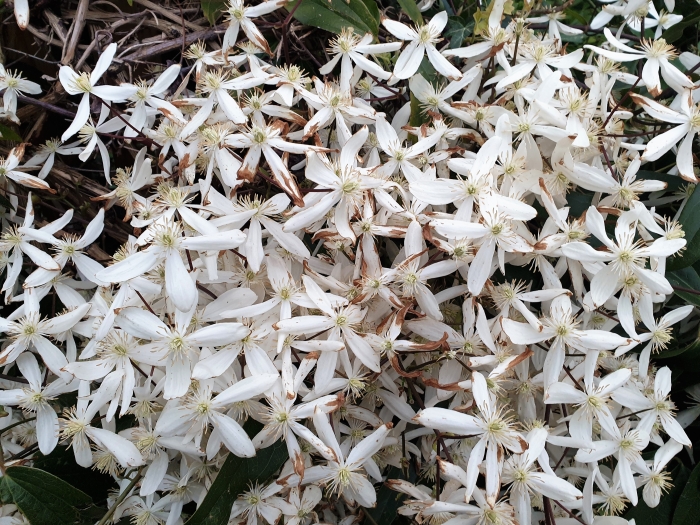Armand Clematis
(Clematis armandii)
Armand Clematis (Clematis armandii)
/
/

Emőke Dénes
CC BY-SA 4.0
Image By:
Emőke Dénes
Recorded By:
Copyright:
CC BY-SA 4.0
Copyright Notice:
Photo by: Emőke Dénes | License Type: CC BY-SA 4.0 | License URL: https://creativecommons.org/licenses/by-sa/4.0 | Uploader: DenesFeri | Publisher: Wikimedia Commons | Title: Ranunculales_-_Clematis_armandii_-_6.jpg | Notes: {{Information |Description ={{en|1=Location taken: American Plant Food Company, 7405 River Road, Bethesda MD.. Names: Daphne x burkwoodii 'Carol Mackie', Carol Mackie Burkwood Daphne, Carol Mackie Daphn Classification: Plantae > Trache... |

























Estimated Native Range
Summary
Clematis armandii, commonly known as Armand clematis or evergreen clematis, is an evergreen climbing plant native to mountainous regions and forest margins in China and Myanmar. It can reach a height of 20 feet, with leathery, dark green leaves that provide year-round interest. In early to mid-spring, it produces clusters of fragrant, star-shaped white flowers, each about 2.5 inches across, which emerge on the previous year’s growth. The flowers are particularly showy, making it a popular choice for trellises, walls, and arbors.
Armand clematis is valued for its evergreen foliage, fragrant and showy flowers, and its ability to provide quick coverage as a screen or vertical element in the garden. It is often used to cover fences, pergolas, and other structures. While it prefers full sun to part shade, it requires protection from intense afternoon sun in hotter climates. It thrives in well-drained soil and requires regular watering, especially during dry periods. It is hardy in USDA zones 7 to 9, which includes many southern and western parts of the USA. To maintain a tidy appearance and promote vigorous growth, pruning can be done after flowering. Leaf tip burn can occur in salty soils or with saline water, and the plant may be susceptible to clematis wilt, a fungal disease.CC BY-SA 4.0
Armand clematis is valued for its evergreen foliage, fragrant and showy flowers, and its ability to provide quick coverage as a screen or vertical element in the garden. It is often used to cover fences, pergolas, and other structures. While it prefers full sun to part shade, it requires protection from intense afternoon sun in hotter climates. It thrives in well-drained soil and requires regular watering, especially during dry periods. It is hardy in USDA zones 7 to 9, which includes many southern and western parts of the USA. To maintain a tidy appearance and promote vigorous growth, pruning can be done after flowering. Leaf tip burn can occur in salty soils or with saline water, and the plant may be susceptible to clematis wilt, a fungal disease.CC BY-SA 4.0
Plant Description
- Plant Type: Vine
- Height: 15-30 feet
- Width: 10-15 feet
- Growth Rate: Rapid
- Flower Color: White
- Flowering Season: Spring, Winter
- Leaf Retention: Evergreen
Growth Requirements
- Sun: Full Sun, Part Shade
- Water: Medium
- Drainage: Medium
Common Uses
Bee Garden, Bird Garden, Border Plant, Butterfly Garden, Deer Resistant, Drought Tolerant, Fragrant, Hummingbird Garden, Rabbit Resistant, Showy Flowers, Street Planting
Natural Habitat
Mountainous regions and forest margins in China and Myanmar
Other Names
Common Names: Armand Clematis
Scientific Names: , Clematis armandii, Clematis armandii var. biondiana, Clematis biondiana, Clematis ornithopus, Clematis armandii var. armandii,
GBIF Accepted Name: Clematis armandii Franch.